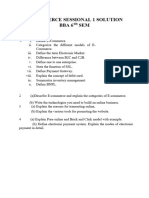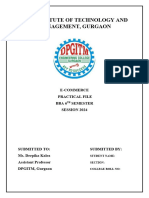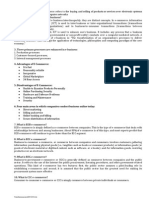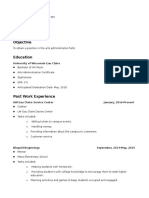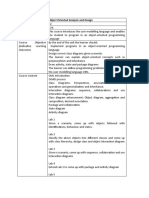0% found this document useful (0 votes)
20 views10 pagesIct2 Lec1
The document provides an overview of E-Commerce, defining it as the online exchange of goods and services, and differentiating it from E-Business. It discusses various types of E-Commerce, benefits, barriers, payment systems, and the impact of technology and social media on E-Commerce practices. Additionally, it covers legal considerations, future trends, and the environmental impacts of E-Commerce.
Uploaded by
Alieu BanguraCopyright
© © All Rights Reserved
We take content rights seriously. If you suspect this is your content, claim it here.
Available Formats
Download as PDF, TXT or read online on Scribd
0% found this document useful (0 votes)
20 views10 pagesIct2 Lec1
The document provides an overview of E-Commerce, defining it as the online exchange of goods and services, and differentiating it from E-Business. It discusses various types of E-Commerce, benefits, barriers, payment systems, and the impact of technology and social media on E-Commerce practices. Additionally, it covers legal considerations, future trends, and the environmental impacts of E-Commerce.
Uploaded by
Alieu BanguraCopyright
© © All Rights Reserved
We take content rights seriously. If you suspect this is your content, claim it here.
Available Formats
Download as PDF, TXT or read online on Scribd
/ 10














